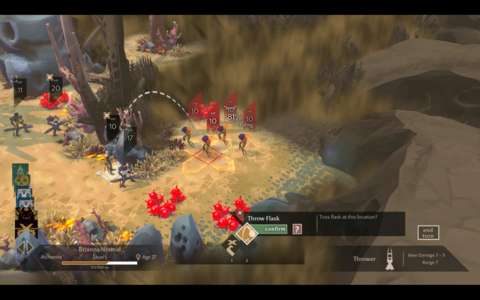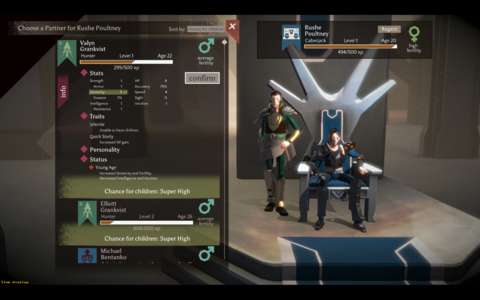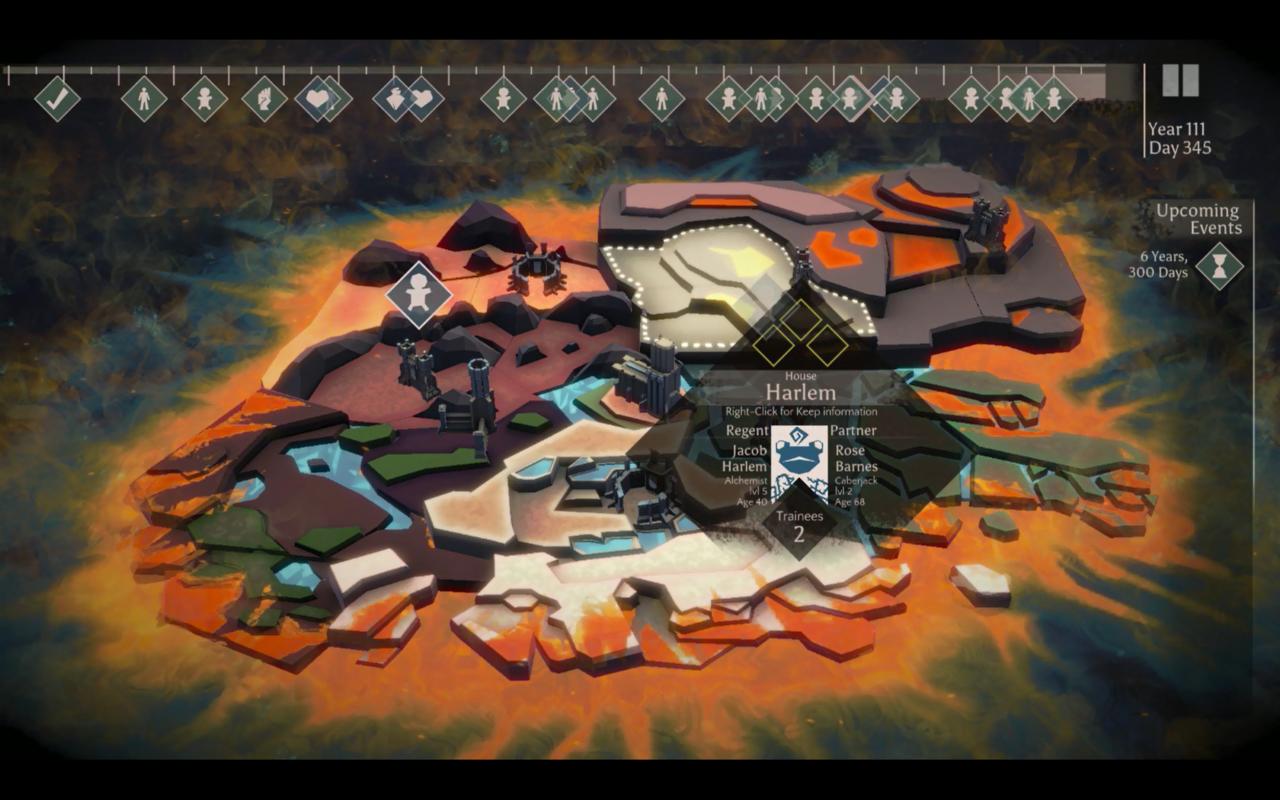Massive Chalice Early Access Review
It's not the size that counts.
GameSpot's early access reviews evaluate unfinished games that are nonetheless available for purchase by the public. While the games in question are not considered finished by their creators, you may still devote money, time, and bandwidth for the privilege of playing them before they are complete. The review below critiques a work in progress, and represents a snapshot of the game at the time of the review's publication.
Massive Chalice is a turn-based strategy game that asks you to think not in hours, days, or years, but generations. While the alien invasion of XCOM: Enemy Unknown took place over months, the war against the enemy force in Massive Chalice spans hundreds of years. This alone is a fascinating context for a strategy game that adheres closely to the XCOM formula. The ravages of time permanently alter your heroes' stats and abilities, and they can even die of old age outside of battle. This shifts the strategic focus from the management of individuals to the creation of bloodlines, where marriages are arranged to promote positive genetic traits--the outcomes of which won't be seen until those children come of age and join the fight.
The tactical focus, however--the turn-based battles where you send your heroes out to battle on a grid--takes place in what is essentially "normal" time. They are snapshots of your heroes' lives, and are the arenas in which the consequences of your long-term decisions are most immediately felt. Did you raise a generation of asthmatics? If so, those heroes won't be able to move very far after sprinting. Perhaps two of your heroes had a baby out of wedlock, which you decided to give to an orphanage. Their sadness at being separated from their child will make them far less effective on the battlefield.
Fallout 4 Next Gen Update Comparison Stellar Blade - 13 Things I Wish I Knew S.T.A.L.K.E.R. 2: Heart of Chornobyl — Official "Not a Paradise" Trailer Sea of Thieves Season 12: Official Content Update Video Manor Lords - Official Medieval City Builder/RTS Launch Trailer Devil May Cry: Peak Of Combat | Dante: Blazing Tempest Gameplay Trailer Honkai: Star Rail - "Then Wake to Weep" | Version 2.2 Trailer SAND LAND — Official Launch Trailer Stellar Blade - Hard Mode No Damage Gigas Boss Gameplay Stellar Blade - Hard Mode No Damage Abaddon Boss Gameplay Stellar Blade - (Almost) All Outfits Granblue Fantasy: Relink - New Content Trailer
Please enter your date of birth to view this video
By clicking 'enter', you agree to GameSpot's
Terms of Use and Privacy Policy
These curveballs are the significant variables that need to be taken into account when fighting in tactical encounters, which will initially feel familiar to turn-based strategy fans. You move your heroes around the grid, attempting to get in range of enemies, and deal damage with either melee or ranged units. A great importance is placed on line of sight; there is no cover to cower behind, only obstacles like trees and boulders that completely obscure your presence. If an enemy can't see you, it can't attack you, so unit placement plays a great deal into your tactical considerations.
One of the three classes, called a Caberjack, has the ability to knock enemies backward with a giant melee battering ram. Knocking enemies into walls stuns them for a turn; knocking them into other enemies will stun both, with the direction of the knockback effect determined by which angle you hit the enemy from. Another class, called the Hunter, can unlock a bow that shoots through enemies, hitting all in a straight line. The third and final class is a grenade specialist called the Alchemist, who throws flasks which can catch multiple enemies in area-of-effect explosions. Three classes may not seem like many, especially when you can have a maximum of five heroes in a single battle, but their abilities all emphasise how important positioning is, and they all combine to create wonderful moments of tactical opportunity and exploitation.

The monstrous enemies you face also play into the generational focus. One enemy, called a Wrinkler, ages your hero five years every time it lands a blow. Another enemy drains heroes of experience points and even entire levels with an energy beam. Cradles are giant health sponges that constantly give birth to smaller enemies unless taken out quickly. Across the board, Massive Chalice's enemies are interestingly designed, and their idiosyncratic abilities make for wholly unique threats and, therefore, highly engaging battles.
But if you do find yourself overwhelmed and a hero falls, his death is permanent. The pain of loss is far greater than you might feel for a veteran XCOM soldier, because you're not just losing a unit in battle--you're losing his genes, his bloodline, and all manner of potential he could have passed onto the next generation. You see, heroes in Massive Chalice have a life cycle: they are born, train until they're 15 years old, then join the ranks as selectable units in the tactical view. Throughout the prime of their lives, they fight. Toward the end of their lifespans, they can retire to a number of different roles that all have tangible effects on the strategy metagame. They can become Sagewrites, where they devote their remaining years to scholarly pursuits that greatly increases the research speed of new items. Or, they can become standard bearers, training all other recruits by imparting a small amount of experience points each day. Finally, they can become regents of castles, whereupon you arrange for their marriage other heroes (with high fertility ratings) and hope the castle becomes a baby factory for the next generation of heroes. The key thing here is that heroes can only choose to become one of these, and once they do, they retire from the battlefield forever. The choice between having a powerful unit to fight with, and removing her from harm so that she can impart her knowledge and genetic traits to the next generation, is agonising. This is why the death of a hero hurts so much--because you lose both roles in an instant.

Yet death is inevitable in a game that spans hundreds of years. The best you can hope for is that heroes survive long enough to retire to roles where their traits can pass down to other trainees. Part of the strategy in Massive Chalice is to breed an army of super heroes; maximising the prominence of favourable traits by inter-marrying skilled heroes. But breeding isn't an exact science; randomness plays a large role in determining a child's traits, while recessive genes you didn't know about could also become dominant in a subsequent generation. It is fascinating to see how these decisions play out over such a long term, and--much like the tactical combat--the system inspires a wholly unique train of strategic thought.
Your ultimate goal, then, is to keep surviving enemy attacks for 300 years, until the eponymous Massive Chalice charges up enough energy to wipe them out for good, thereby winning the game. Particularly poor tactical decisions could result in entire bloodlines being lost in a single battle, while strategic negligence means territories could be destroyed entirely, and the potential of the next generation squandered. All the while, occasional random events throw wildcards into the fray in the form of hilariously-written multiple- choice scenarios, while you simultaneously contemplate whether your role is more that of a strategy master or eugenics professor. Hint: it's both.

The breeding side is where Massive Chalice falters, however. It can be difficult to tell heroes apart visually, and the randomness associated with the way a child's traits are determined makes for less intentional play. When fighting with high-level heroes, it can be difficult to keep track of all the variables in play that their traits are responsible for--the interface only pops up with a small line of white text when a trait's effect is in play. There needs to be a greater visual focus on these moments, so that your breeding decisions feel like they have greater consequence in the tactical view. The descriptions of a few traits are also missing entirely, but the only gameplay bug I encountered was a single instance of an enemy spawning inside a wall. That aside, Massive Chalice feels like a complete experience, with a refreshingly unique take on both turn-based battles and ultra-long-term strategy.
| What's There? | A highly unique take on turn-based strategy game, equal parts breeding and combat, that focuses on the effects of your decisions over generations. |
| What's To Come? | Adjustable difficulty, Iron Man mode, controller support, language localisation, and tweaks to that most nebulous of mistresses--balance. |
| What Does it Cost? | $29.99, available via Steam. |
| When Will it Be Finished? | The closest release date Double Fine has given is Spring 2015. |
| What's the Verdict? | Massive Chalice is one of the most complete and cohesive Early Access games available, with only a few minor bugs present. It already offers a fantastic interpretation of the strategy genre--a highly accessible blend of XCOM's combat with a lighter version of Crusader Kings II's dynasty simulation. |
Got a news tip or want to contact us directly? Email news@gamespot.com
Join the conversation